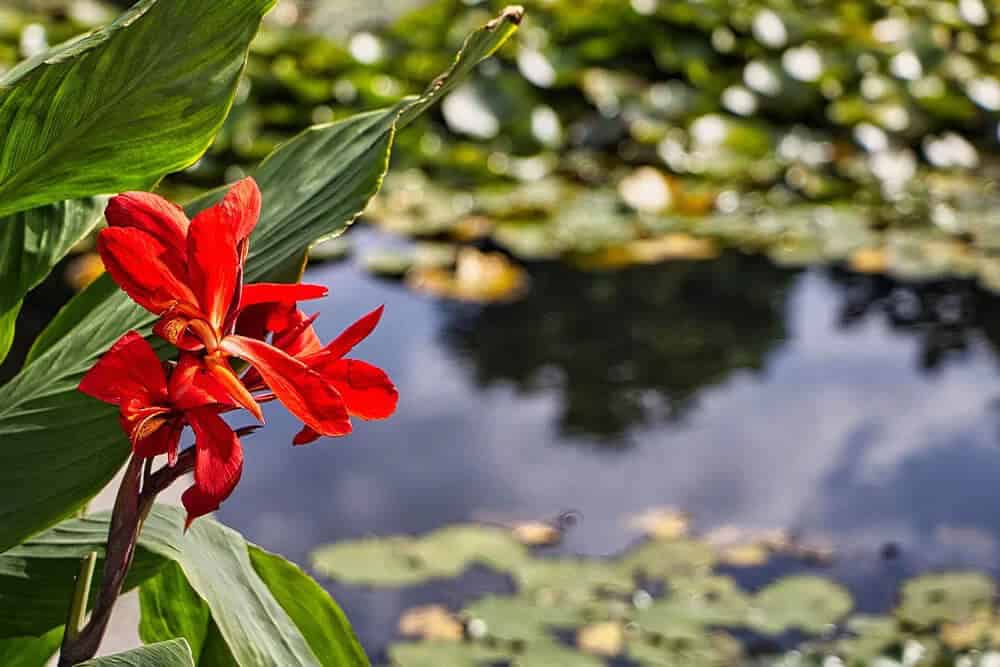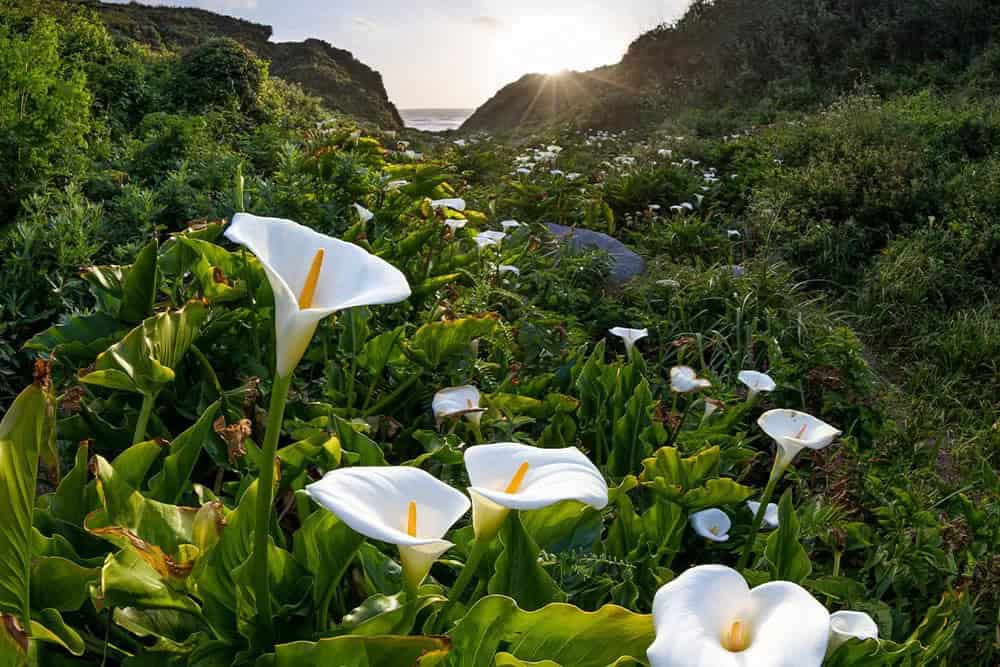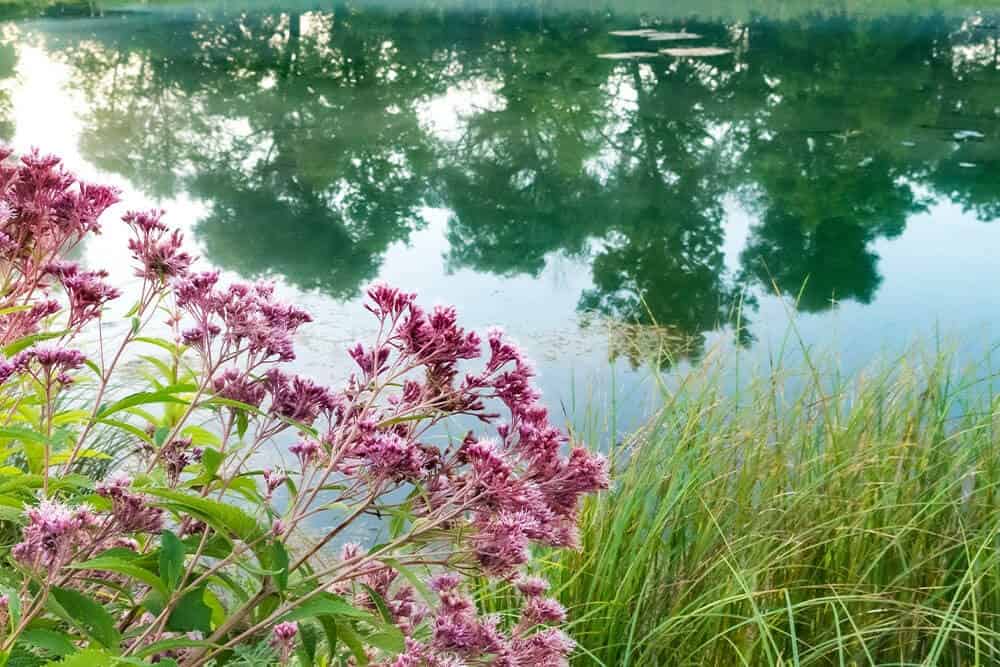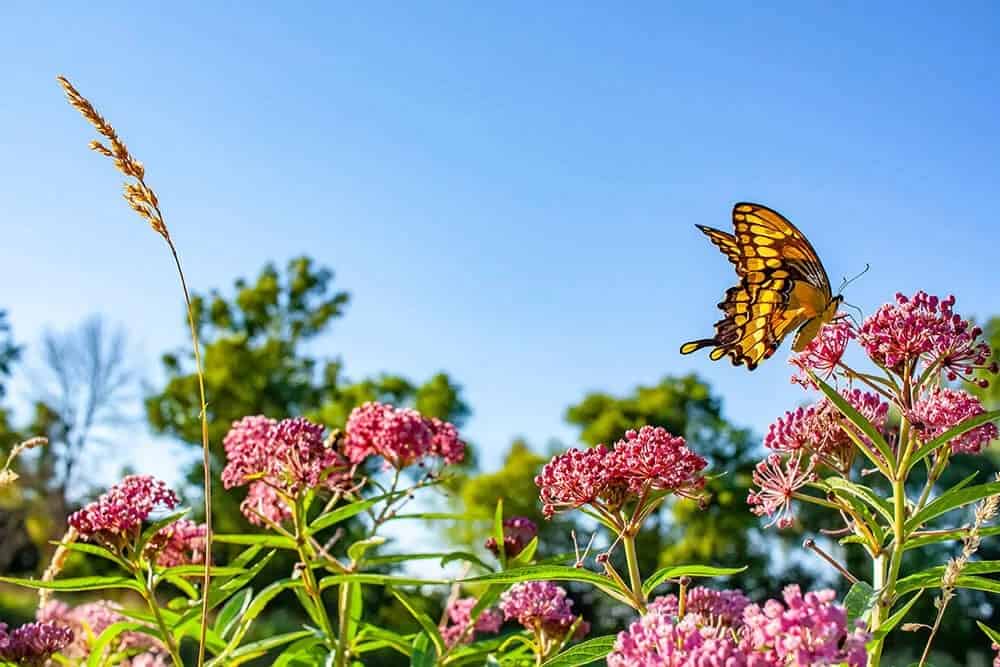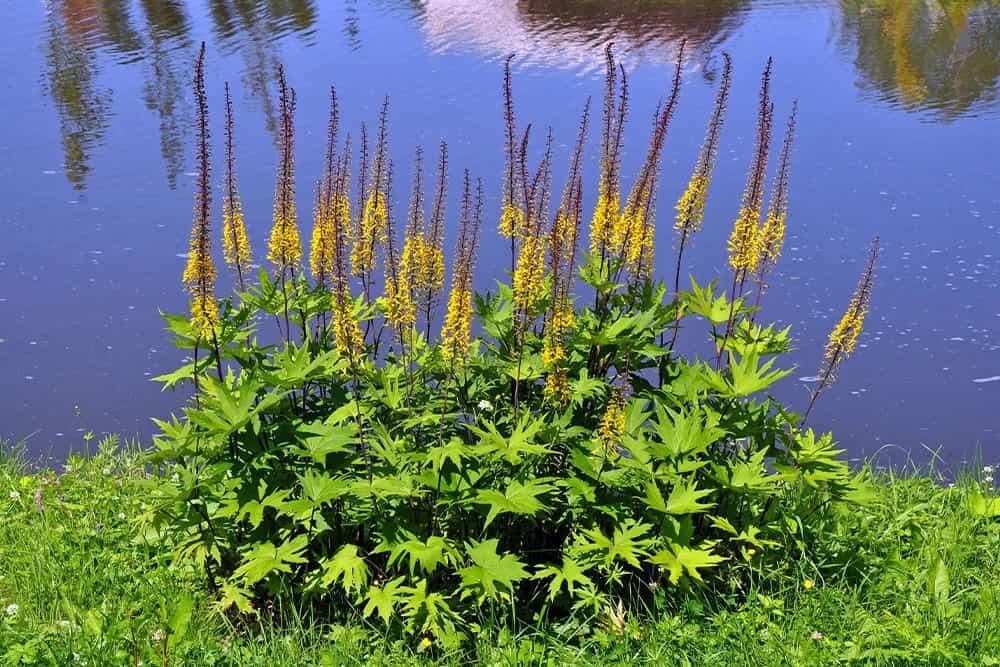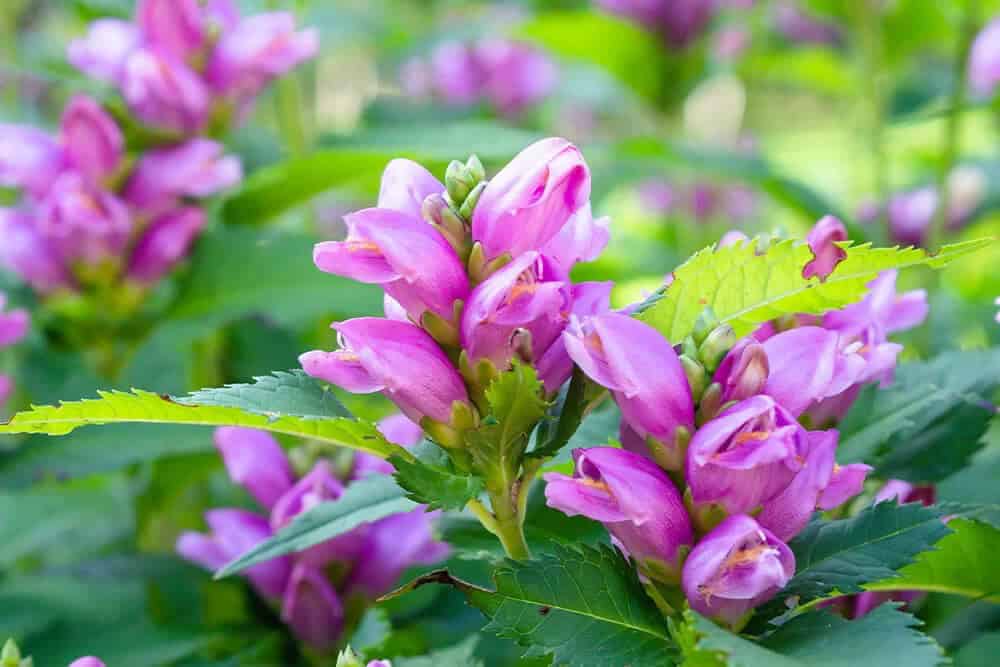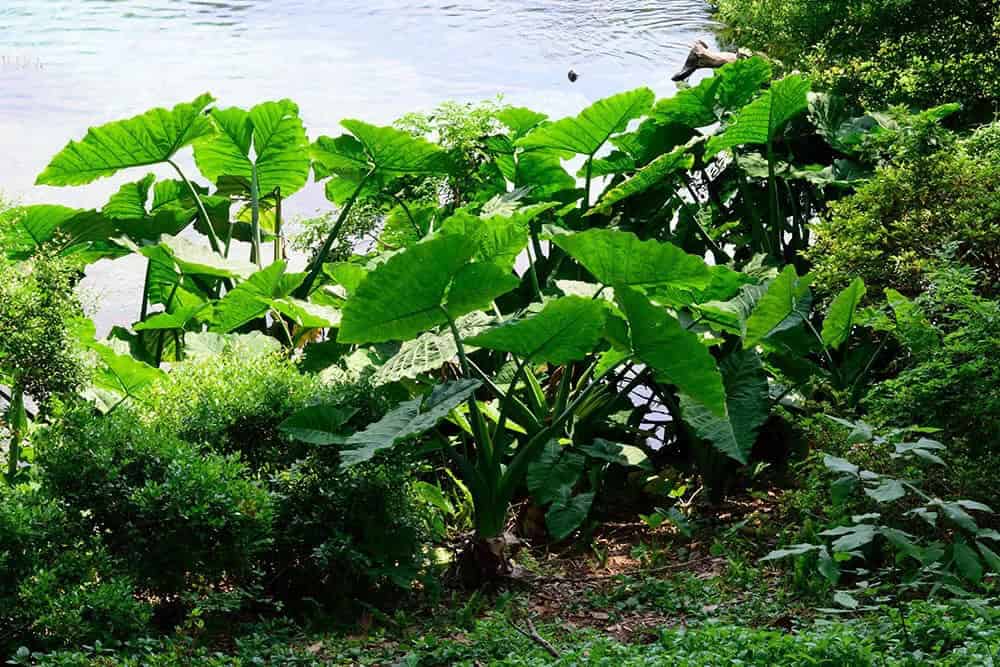While conserving water is crucial for many gardeners, some of us are fortunate enough to have areas where the soil remains perpetually moist. This presents a unique opportunity to cultivate lush growth with water-loving plants that flourish in these conditions.
Heavy, rich soil that retains moisture can be transformed into stunning rain gardens or tropical oases. The key to success lies in selecting plant species that thrive when their roots are consistently wet.
Unlike other types of plants, which may rot or perish in soggy soils, water-loving plants have evolved to tolerate and even revel in these conditions. By embracing the natural moisture levels in your outdoor area, you can create a thriving ecosystem that showcases the beauty of these unique plant species.
Key Takeaways
When it comes to choosing plants for rain gardens, water gardens, or areas near natural waterways, those that thrive in wet conditions are an excellent choice. These plants don’t like to dry out, making them perfect for areas where moisture is plentiful. Many of these water-loving plants boast extravagant blooms, such as the Canna Lily and Meadowsweet.
In addition to their beautiful flowers, these plants provide a vital source of sustenance for wildlife, including bees, butterflies, and other creatures. Some water-loving plants are even shade tolerant, like the Leopard Plant, while others thrive in full sun, including Iris, Golden Creeping Jenny, and Calla Lily. By incorporating these plants into your outdoor space, you can create a haven that attracts local wildlife and adds beauty to your surroundings.
10 Luscious Water-Loving Plants for Your Rain Garden
Iris Japanese and Siberian (Iris)
As the goddess of the rainbow, Iris is a fitting namesake for these extraordinary flowers. When submerged in water, they absorb it with gusto, growing twice their size and displaying vibrant colors that seem almost otherworldly. Enthusiasts of Iris are known to become obsessed with cultivating new, rare, and exotically colored blooms, and it’s easy to understand why – the sheer range of hues and patterns on display is nothing short of breathtaking.
For those who adore water-loving plants, Siberian and Japanese Irises are a dream come true. These hardy beauties can grow up to 4 feet tall, depending on the variety, and thrive in USDA zones 3-9. As they stretch towards the sun, their stems adorned with brilliant spring blooms that seem almost too good to be true.
But Irises aren’t just a novelty – there are also species native to North America, such as Iris versicolor (Blue Flag) and Iris virginica (Southern Blue Flag).
Whether you’re looking to create a lush, vibrant bog garden or simply add some drama to your springtime display, these remarkable flowers are sure to captivate.
Canna Lily (Canna)
For a touch of tropical elegance in your garden, few plants compare to the showstopping Canna Lily. Its large, broad leaves unfurl to reveal vibrant foliage, often featuring striking solid or variegated patterns. But it’s the plant’s majestic flowers that truly steal the spotlight. Rising above the leafy canopy on sturdy spikes, these blooms burst forth in a kaleidoscope of colors – think bold whites, fiery reds, radiant oranges, and sunny yellows.
The possibilities are endless, making Canna Lilies a true standout in any garden. As an added bonus, their sweet nectar attracts birds, bees, and hummingbirds, adding to the plant’s allure.
Native to subtropical regions, Cannas have some species that call the southern United States home. With hardiness zones ranging from 7 to 11, these tropical gems can thrive in a variety of climates.
In colder areas, simply dig up the rhizomes and store them indoors over winter before replanting come spring.
But don’t forget – Canna Lilies are thirsty plants! Moderate watering will do the trick, though in arid environments, consider submerging the roots or planting them in pots to soak up plenty of water from ponds or pools. With proper care, you’ll enjoy a bountiful display of these exotic beauties all summer long.
Calla Lily (Zantedeschia)
Joe Pye Weed (Eutrochium)
Joe Pye Weed is a truly remarkable plant that has captured the hearts of butterfly enthusiasts. Native to central and eastern North America, this striking flora boasts impressive stature, growing up to 7 feet tall, making it an eye-catching addition to any landscape. Its hardiness spans USDA zones 4 to 9, ensuring its viability in various climates. Typically found near waterways or moist areas, Joe Pye Weed thrives in rain gardens, naturalized settings, and as a border for water features.
The fragrant mauve blooms emit a sweet vanilla scent, not only captivating the eye but also drawing in a diverse array of pollinators, including bees and butterflies.
Swamp Milkweed (Asclepias incarnata)
Swamp Milkweed is a highly valued plant for its role in supporting local wildlife. This adaptable species excels in wet environments and plays a crucial part in the life cycle of Monarch butterflies, serving as a vital larval host plant. Additionally, it’s a major nectar source for various pollinators. As a native North American plant, Swamp Milkweed tends to naturalize in riparian and pond areas, making it an excellent choice for pollinator gardens and butterfly sanctuaries.
Its beauty extends beyond these habitats, as the plant also thrives in poolside and water garden settings. The tiny, delicate flowers of Swamp Milkweed are a stunning sight when they burst forth in masses atop 3- to 5-foot plants. Fragrant and showy, this blooming spectacle can be enjoyed throughout the summer and into the fall. With its hardiness ranging from USDA zones 3 to 9, Swamp Milkweed is an excellent addition to any garden looking to attract pollinators and support local wildlife.
Leopard Plant (Ligularia)
Ligularia, also known as Leopard Plant, is a striking summer bloomer characterized by its vibrant lemon-yellow flowers, reminiscent of daisies. These blooms emerge from tall spikes that can reach heights of 3 to 6 feet, providing a dramatic display. The plant’s lush basal rosette, comprising large and fascinating leaves, serves as the foundation for its sprawling habit, which spreads across 2 to 4 feet in diameter. Even when not in bloom, the plants maintain an attractive mounded form.
This adaptable perennial thrives in full shade and wet soil conditions, making it a perfect choice for areas with high moisture levels. Its tolerance of USDA hardiness zones 4 to 8 allows it to flourish through June and July, providing extended periods of colorful blooms. Ligularia’s preference for protection from wind and humus-rich soils that never dry out further solidifies its place in rain gardens, bog gardens, and along streams and ponds, where its roots can remain comfortably moist.
Meadowsweet (Filipendula ulmaria)
Meadowsweet’s global presence is a testament to its adaptability, having naturalized across various regions including Europe, Eastern Canada, the Mid-Atlantic and Northeast USA. This hardy perennial stands 4 feet tall, typically thriving in wet environments such as marshes, woodlands, meadows, and areas near waterways. As a sun-loving plant, Meadowsweet flourishes in USDA zones 3 to 9 and propagates itself through self-seeding, occasionally spreading beyond its intended area.
During spring and summer, Meadowsweet’s upright clusters of small flowers burst forth above its aromatic leaves. The 6-inch white-to-pink panicles are a sight to behold, emitting a sweet aroma that attracts bees and other wildlife. These showy blooms also make for striking cut and dried flower arrangements.
Turtlehead (Chelone)
Turtlehead, a North American native perennial, is sure to delight anyone who loves snapdragons. Its unique flowers form a hooded structure that resembles a turtle’s head with its mouth open wide. These tubular blooms come in a range of colors including red, pink, and white, standing tall above the dense, dark green foliage. As an added bonus, Turtlehead is a magnet for bees, butterflies, and hummingbirds, making it a popular choice for gardeners who want to attract these beneficial visitors.
This versatile plant can be found growing in a variety of environments, including along streams, in moist woodlands, bogs, and marshes. When it comes to its growth habits, Turtlehead prefers moist, rich soils and can reach heights of 2 to 3 feet tall in USDA hardiness zones 3 to 9. What’s more, these perennials have a slow growth rate, but they bloom late in the season, making them an excellent choice for adding some much-needed color to your garden during the late summer and fall months.
Elephant Ear (Colocasia)
Elephant Ear, a tropical perennial with breathtaking giant leaves, is a sight to behold. With numerous cultivars offering diverse choices, this plant boasts an impressive range of leaf shapes, edges, and colors. From vibrant lime green to nearly black hues, each variety adds its unique charm. Native to Africa, Asia, Australia, Central and South America, Elephant Ear flourishes in moist conditions during the growing season, when it can grow up to 6 feet tall.
In cooler climates, gardeners can enjoy this plant’s beauty from spring to fall by providing partial shade or full sun. Hardy in USDA zones 8 to 10, but colder climates require tuber lifting and replanting in the spring.
Golden Creeping Jenny (Lysimachia nummularia)
Golden Creeping Jenny, also known as moneywort, thrives in moist environments, making it a cinch to cultivate. This evergreen ground cover excels when displayed in hanging baskets or containers, where its delicate chartreuse foliage and sparse summer yellow blooms cascade beautifully over the edges. As a natural ground cover, Golden Creeping Jenny fills gaps with its soft, leafy mat, but beware – its ease of growth can sometimes lead to weed-like behavior in certain areas.
Characterized by its diminutive stature (2-4 inches tall) and moderate spread (12-18 inches wide), this water-loving plant hails from Europe and Western Asia. Classified as an herbaceous perennial, Golden Creeping Jenny is hardy in USDA zones 4 to 9, making it a suitable choice for many gardens.
Frequently Asked Questions About Water-Loving Plants
What is the best plant to soak up water?
Plants that thrive in environments with consistently moist soil are often the best at absorbing excess water. This is particularly true for species native to tropical regions or areas with significant rainfall, such as the Pacific Northwest. In this context, plants like Elephant Ear (Colocasia) and Leopard Plant (Ligularia) excel at soaking up large amounts of water.
As North American natives, Turtlehead (Chelone), Swamp Milkweed (Asclepias incarnata), and Joe Pye Weed (Eutrochium) are also well-equipped to absorb and retain significant amounts of water, while simultaneously supporting local wildlife.
What is the best ground cover for wet soil?
In the quest for low-growing groundcovers, the Golden Creeping Jenny (Lysimachia nummularia) takes the prize, thriving in wet soil conditions and reaching heights of just 2 to 4 inches while spreading up to 18 inches across. This prolific spreader produces delicate, trailing leaves that can quickly smother a given area with minimal care. While some may find it challenging to remove, its shallow roots make it relatively easy to pull out if needed.
For those who tire of this attractive groundcover, cultivating the soil and removing the plants themselves can be an effective solution. Elsewhere on our list, taller colonizing plants like Iris (Iris) and Turtlehead (Chelone) take a different approach, filling larger areas with their presence rather than spreading in a more traditional sense.
What outdoor plant needs the least amount of water?
While some outdoor plants are remarkably drought-resistant, others thrive in moist environments. Cacti and desert-dwelling plants have evolved remarkable strategies for storing water within their roots, stems, and leaves. They’ve also developed unique methods for absorbing moisture from the air, allowing them to survive for extended periods without hydration. In contrast, water-loving plants require a different set of adaptations to cope with excess moisture.
Some of these plants are highly sensitive to dry conditions and will exhibit signs of stress if they don’t receive sufficient water. Interestingly, other aquatic plants have adapted to seasonal droughts by becoming dormant during the dry period. Plants like Canna Lily (Canna) and Elephant Ear (Colocasia) offer a unique opportunity for gardeners to store them over winter and replant them in spring when water becomes more plentiful.
What is wet soil called?
Wet soil can be referred to by various terms, each describing its unique characteristics. Mud is a common descriptor for soil with poor porosity and minimal air pockets, typically resulting from dense clay soils becoming saturated with water. In contrast, waterlogged soil often refers to a mix of air-filled pores and water-saturated conditions. This distinction highlights the importance of considering soil structure when characterizing its wet state.
What do I do if my soil is too wet?
To maximize the benefits of wet soil, consider cultivating plants that thrive in waterlogged conditions. Another effective strategy is to develop a drainage plan, allowing excess water to flow away from your plants. Additionally, incorporating air into the soil can significantly aid in drying out. One way to achieve this is by mixing in small amounts of sand or gravel to heavy soils, which will enhance drainage.
Furthermore, adding compost or humus-rich additives can create air pockets within the soil, hastening its drying process.
10 Scrumptious Water-Loving Plants to Soak Up Water
When it comes to cultivating a lush and vibrant outdoor space, the presence of wet areas can be a gardener’s best friend. Specifically, water-loving plants are well-suited to environments with high moisture levels, such as rain gardens, water gardens, and natural bog gardens. By taking advantage of these conditions, gardeners can create thriving ecosystems that are resistant to drought and other environmental stressors.
In fact, many plants that struggle in dry soil conditions are able to thrive when their roots are consistently moist. With a little creativity and planning, soggy or boggy soils can be transformed into a haven for water-loving plants, resulting in a truly unique and thriving garden.

